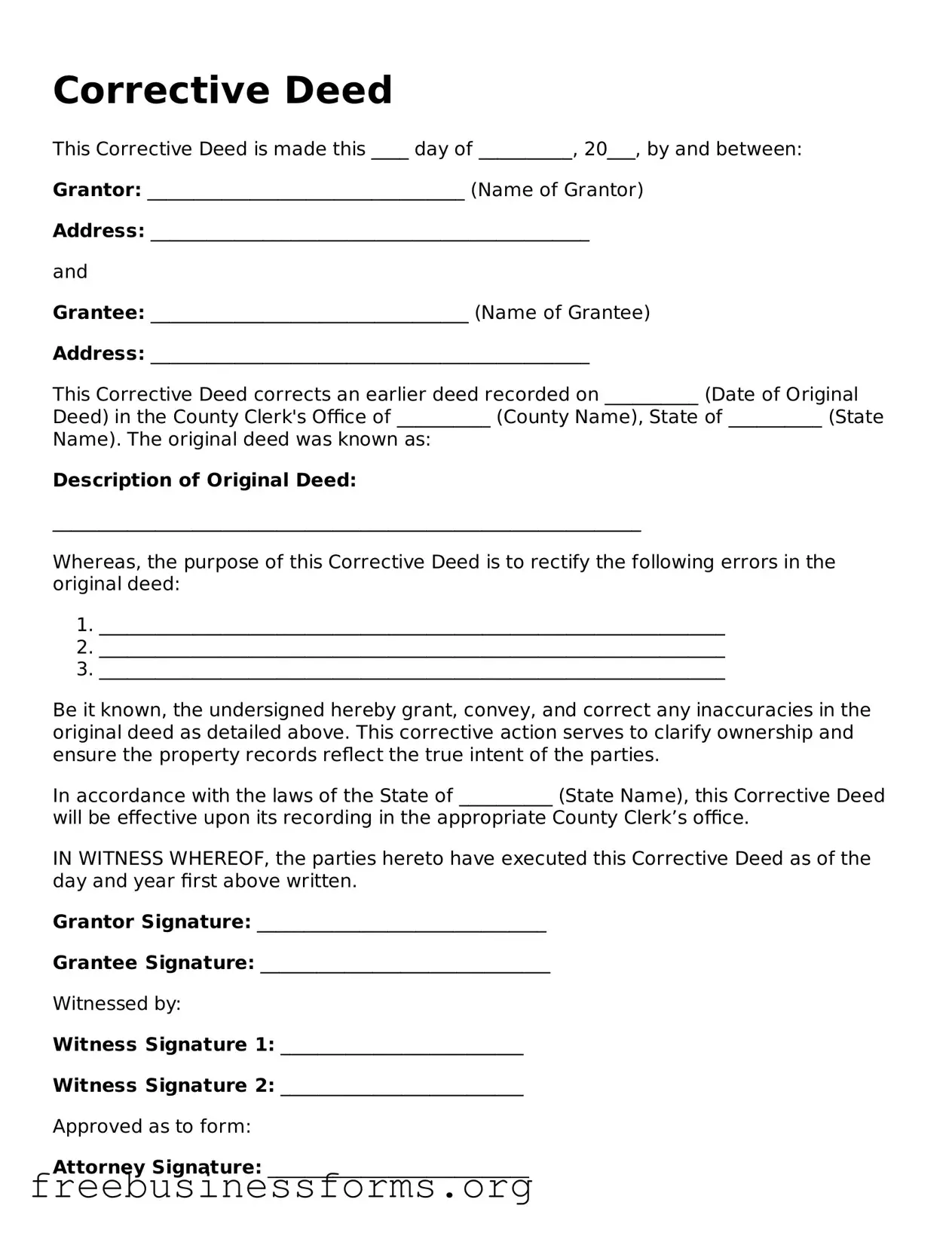Corrective Deed
This Corrective Deed is made this ____ day of __________, 20___, by and between:
Grantor: __________________________________ (Name of Grantor)
Address: _______________________________________________
and
Grantee: __________________________________ (Name of Grantee)
Address: _______________________________________________
This Corrective Deed corrects an earlier deed recorded on __________ (Date of Original Deed) in the County Clerk's Office of __________ (County Name), State of __________ (State Name). The original deed was known as:
Description of Original Deed:
_______________________________________________________________
Whereas, the purpose of this Corrective Deed is to rectify the following errors in the original deed:
- ___________________________________________________________________
- ___________________________________________________________________
- ___________________________________________________________________
Be it known, the undersigned hereby grant, convey, and correct any inaccuracies in the original deed as detailed above. This corrective action serves to clarify ownership and ensure the property records reflect the true intent of the parties.
In accordance with the laws of the State of __________ (State Name), this Corrective Deed will be effective upon its recording in the appropriate County Clerk’s office.
IN WITNESS WHEREOF, the parties hereto have executed this Corrective Deed as of the day and year first above written.
Grantor Signature: _______________________________
Grantee Signature: _______________________________
Witnessed by:
Witness Signature 1: __________________________
Witness Signature 2: __________________________
Approved as to form:
Attorney Signature: ____________________________
